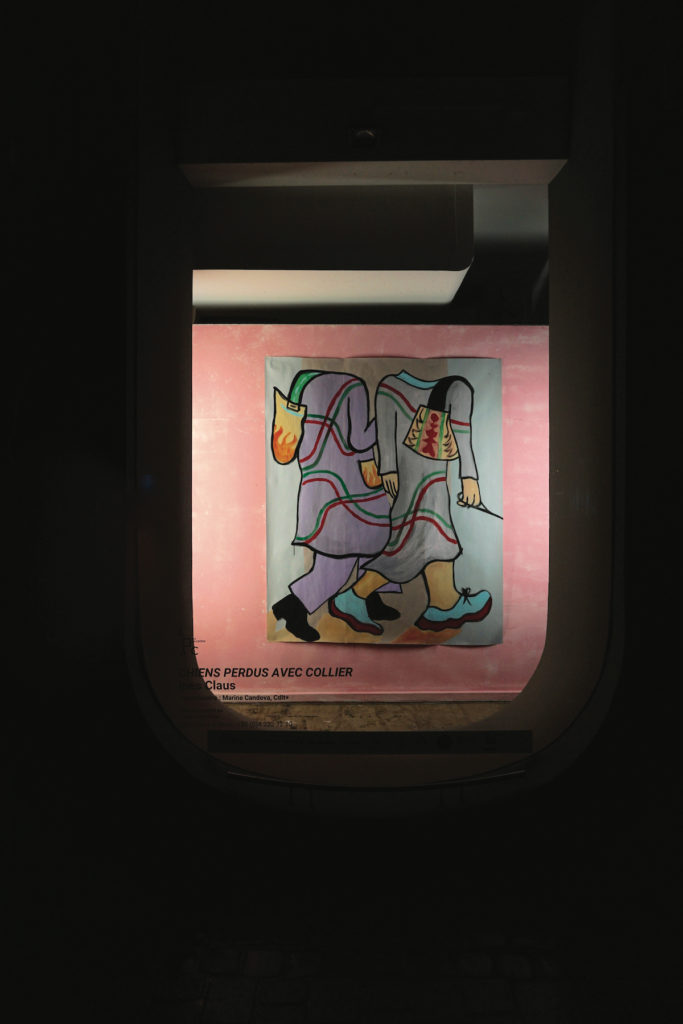-
Histoires simples
Léopold Mottet 1 students
107 Féronstrée
-
Qu’est-ce-qui se trame ici ?
Centre André Baillon
1 Féronstrée
-
Night Walk
Maria Chiara Ziosi
85 Rue de la Cathédrale
-
Thy Cities Shall With Commerce Shine — Part II
Hattie Wade
35 Rue Souverain Pont
-
La Maison Panure – Fève des rois
JJ von Panure
21 Pont d'Île
-
MANTERO
Santiago Vélez
4 Rue de la Cathédrale
-
Mobile Écriture Automatique
Philippe José Tonnard
109 rue de la Cathédrale
-
ST END
Pablo Perez
10 Rue Nagelmackers
-
ALREADYMADE n° 3 : Empty Cart or Cardboard Cybertruck
M.Eugène Pereira Tamayo
18 Rue de l'Etuve
-
Centre de remise en forme (économie de guerre)
Werner Moron
7 Rue de l'Official (Îlot Saint-Michel)
-
Sun(set)(Seed)
Matthieu Michaut
56 Rue Saint-Gilles
-
precarity of non-human entities
Gérard Meurant
23 Rue Saint-Michel
-
S’aligne, l’inconnue sans lecture
Julia Kremer
40 Rue Hors-Château
-
Autumn Collages
Ívar Glói Gunnarsson Breiðfjörð
30 Rue de la Cathédrale
-
Rōt Rot Rôt
Janina Fritz
28 Rue des Carmes
-
Pierre ventilée
Daniel Dutrieux
14 Rue de la Populaire (Îlot Saint-Michel)
-
Peephole
Jacques Di Piazza
31a Rue de la Cathédrale
-
Room Eater
Jorge de la Cruz
5 Rue Saint-Michel (Îlot Saint-Michel)
-
Behind the Curtain
Francesca Comune
31b Rue de la Cathédrale
-
COMMENT
Kim Bradford
16 Rue du Palais
-
Pedro Camejo (série Diaspora)
Omar Victor Diop
25 Rue Saint Paul
-
L’impasse de la vignette, dans le temps et dans l’espace
Michel Bart and Mathias Vancoppenolle
75 Rue Hors-Château
-
Opéra-savon, épisode 1 : L’ Aquarium-Museum
Clara Agnus
20 Rue de la Sirène
Warning: Undefined array key "current_expo" in /var/www/clients/client3/web4/web/wp-content/themes/artaucentre/loop/vitrine.php on line 25

Chiens perdus avec collier
#3
Ines Claus
Curator : Marine Candova
441 Rue Saint Paul
A woman dressed in a two-tone suit walks surrounded by red ornaments and accompanied by a dog from a painting of another era. A dog hides under a clover tablecloth while its collar hangs over its head. The Poivre et sel take a stroll. Friezes tangle swirling collars, now where did the pet go ?
From an approach that has the stroke of something drawn on paper, Ines Claus seems to come to meet us to talk to us with her words clothed with objects. From the nearly painted poster, from edition to installation, she shows the importation of a common dream, of a culture contrasted by the cheap’n’chic. The artist collects books, beautiful images that inspire her to use logical presentation supports.
Her approach extracts an element and/or an attitude captured from reality to bring it back to a simple evidence. A chromatic flat tint, a collage, this interconnection study seeks an object-based aphorism that Ines Claus subtracts from a fascination for visual languages peculiar to advertising, furniture designing and fashion. Like so, the quintessence of Gucci that represents the form of an elite, here coveted by a substance namely the people, creates a pattern close to pop culture that marches in front of it. The object of desire then takes an attitude, it becomes a character, a near animism, and hybrids itself into an aesthetics proper to the way the artist reads her environment. A dog, then its collar that forms something other than its original utility, a pair of shoes with a weird detail, simplified by the pictorial technique of the artist, become an axiom, expressing a nearly Californian dandyism within a popular Belgium. These social symbols then unify to form a narrative material that changes the common sense of what we are used to seeing and that loads her work with a true reading of our behaviors and our social and cultural perspectives.